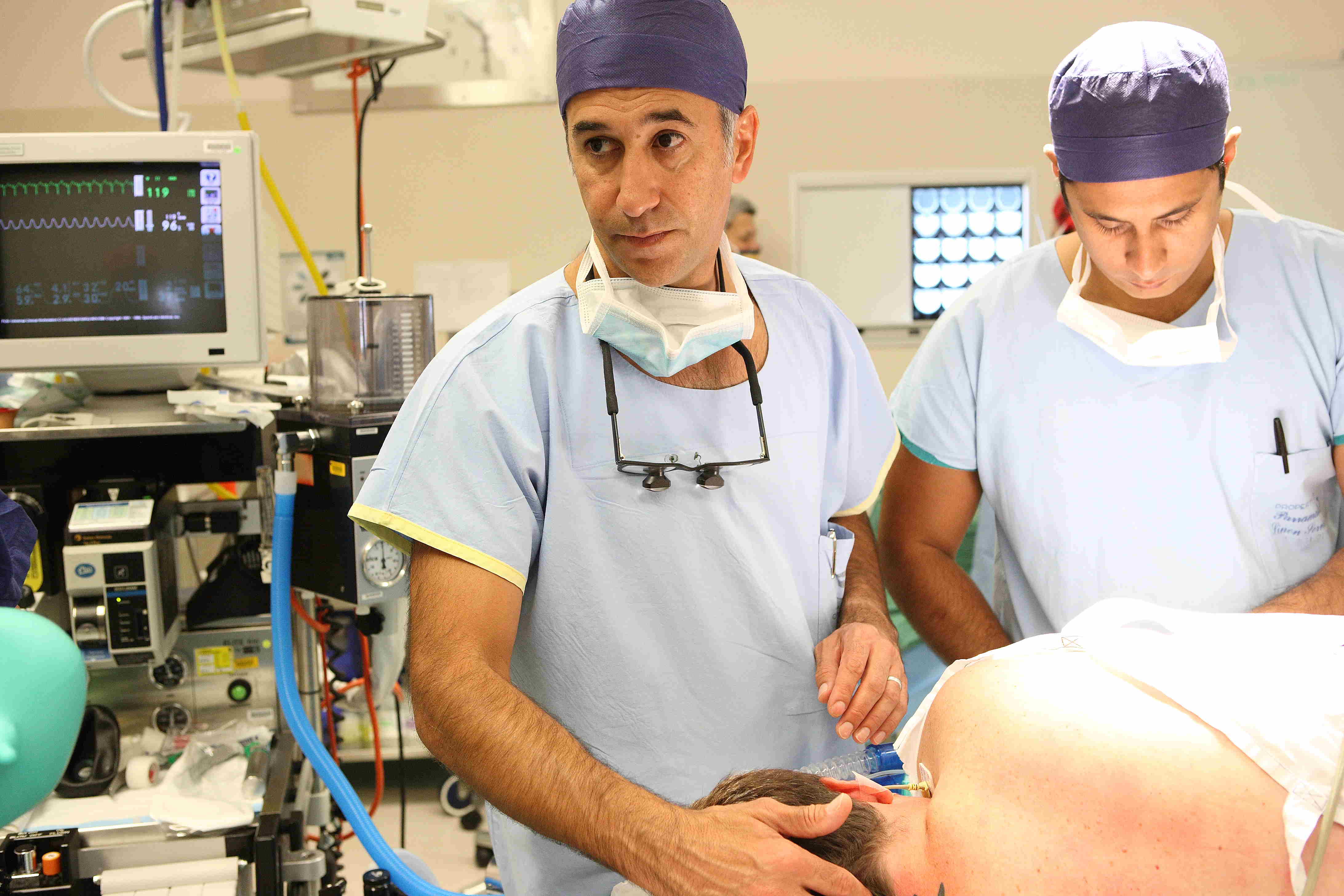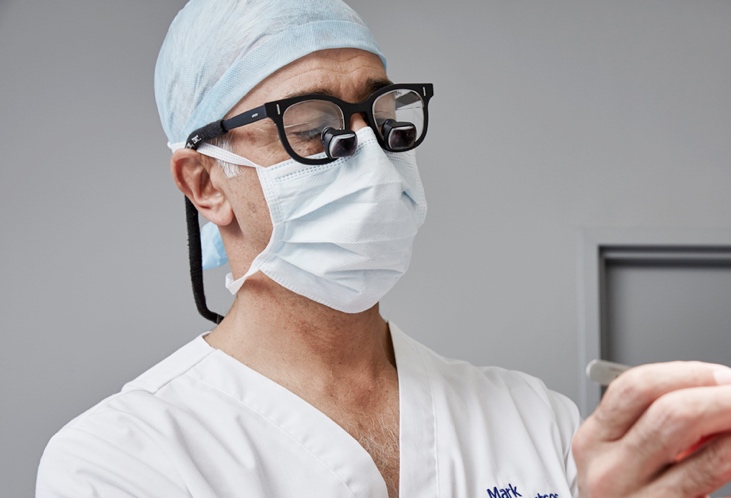Breast Reconstruction
Reconstruction of the female breast following mastectomy is for some patients as vital a consideration as the tumour surgery itself. Rates of breast reconstruction in Australia are low compared with other parts of the developed world. This may relate to a lack of knowledge, access or availability of plastic surgical input into the treatment of breast cancer.
Reconstruction may be undertaken as an ‘immediate’ procedure along with the mastectomy, or may be delayed until after the initial surgery and any additional treatments have been completed. Reconstruction is not for every woman, nor is every woman necessarily a good candidate for reconstructive surgery. There may be factors relating to the tumour, which make a reconstruction a less viable option.
Breast reconstruction can be largely said to take four main forms:
- As more women have been better able to quantify their breast cancer risk using genetic testing for the BRCA gene mutation, the consideration of prophylactic of risk reducing mastectomy has become more prevalent. Where possible, the mastectomy is performed using a nipple sparing technique. In these circumstances it is often possible to perform a one stage, or direct to implant, type of reconstruction. In addition to placing the implant beneath the muscle, Acellular Dermal Matrix (ACDM) can be used to complete the pocket into which the implant is placed. In the larger breasted patient, the tissue ordinarily discarded in a breast reduction can often be utilised to complete the lower pocket.
- Tissue expansion and implant reconstruction: wherein an inflatable implant (expander) is placed under the muscle following a mastectomy, either immediately, or as a later procedure once the mastectomy wound is healed and matured. The expander is then inflated by injection with saline usually on a weekly basis. This ‘tissue expansion’ type of technique stretches and recruits overlying skin and tissues to allow for the secondary placement of an implant. This usually takes place around three months after the desired volume is reached.
- ‘Autologous’ tissue reconstruction where the new breast is entirely formed by the use of the patients own tissues, usually from the abdomen. In this type of reconstruction the tissue usually discarded in an abdominoplasty is used to form the new breast. The tissue may be moved in one of two ways, either still attached to its underlying muscle to provide a blood supply to keep it alive, or with its circulation wholly separated from the body and then re-established on the chest using microsurgical techniques. Basically it is the use of excess lower abdominal tissue to make the new breast. This is a significantly bigger operation than the above.
- A hybrid of the two above techniques where an implant is used to supplement the patients own tissue reconstruction. This is where the latissimus dorsi, a large muscle from the back, is used with its overlying skin and an implant beneath to give sufficient volume.
Whether to have a breast reconstruction and, if so, which technique is the best for an individual patient requires careful assessment via examination and discussion, as well as consultation with the surgeon who will perform the mastectomy.
These facilities, as well as access to a highly qualified and experienced breast care nurse, can be offered through A/Prof Gianoutsos’ practice.
There are many reasons why women have breast reduction surgery. If you have breasts which are out of proportion with your body, if you suffer with back, neck and shoulder pain and indentations from your bra, if you are unable to exercise with freedom, if you suffer with irritations and rashes in the fold under your breasts, if you are unable to wear the sort of clothing you wish or indeed that fits you comfortably then you may be a good candidate for a breast reduction procedure. The exact nature of these and the best way to achieve your outcome will be discussed at the time of your personalised consultation with A/Prof Gianoutsos.
A/Prof Gianoutsos performs breast reduction surgery under general anaesthesia usually as an overnight stay but also as a day surgery procedure. Your anaesthetic will be done by one of the expert and experienced specialist anaesthetists with whom A/Prof Gianoutsos works on a regular basis.
The procedure can be performed using a variety of incisions. Most often A/Prof Gianoutsos employs a type of inverted T along with an incision around the nipple. A vertical or “lollipop” type incision can sometimes be used in smaller reductions. In either case, the breast tissue volume is decreased, the nipple is moved to a more ideal position (still attached to the breast tissue, blood vessels and nerves) and the breast skin tightened. As well as a reduction there is also a breast lift performed. Liposuction may also be used particularly towards the side of the chest wall.
Following surgery you will placed into a surgical bra and sometimes a binder. It is unusual for A/Prof Gianoutsos to use drains. You will need to minimize physical activity for 3 to 4 days when you get home. You can shower the day after your surgery and replace the simple dressing yourself each day.
You will usually have one night in hospital after your operation. Where appropriate, A/Prof Gianoutsos may perform your surgery as a day only procedure. If you are not insured, this can be a less expensive option.
After discharge you will be seen at A/Prof Gianoutsos’ rooms at around 5 days to remove your dressings and place surgical tapes on the incision lines. You will generally be seen again the following week for a check up. You will then be reviewed at around 6 weeks and then six and twelve months.
A/Prof Gianoutsos and his staff are available at any time, however, should you have any queries or concerns.
A/Prof Gianoutsos generally recommends a minimum of two weeks off work following your breast reduction surgery. At this point you will still have some swelling and sometimes some bruising but you will be comfortable to do normal day to day activities. Vigorous upper body exercise should be avoided for around 6 weeks.
At, and even before, you return to see A/Prof Gianoutsos for your first postoperative visit, you will notice the reduction in weight in your breasts. Many women comment upon the fact that they experience improvement in their back, neck and shoulder discomfort very early on. Your swelling will resolve over around 6 weeks at which point your final result will be seen although subtle changes can occur over a longer period.
All surgery carries at least some degree of risk. These are minimized by ensuring you are as healthy as possible and prepared for the operation, by selecting a properly qualified and experienced surgeon and allowing yourself a proper recovery period. The particular risks as well as the expected perioperative course will be discussed in detail with you at your consultation and you will have the opportunity to ask any questions.

Our Procedures

Our philosophy is to treat all patients as we would be expected to be treated ourselves.
A/Prof. Mark Gianoutsos


